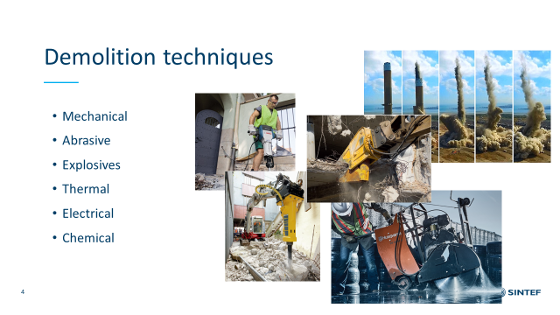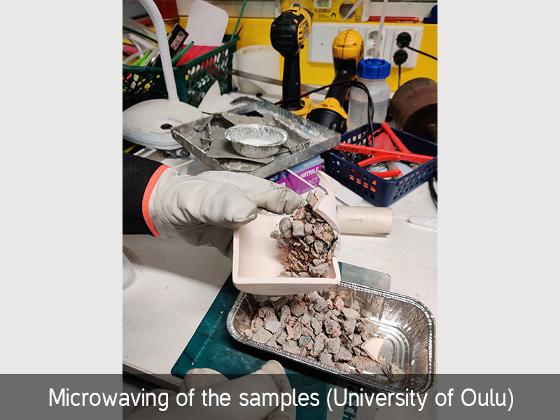DeConcrete WPs
Work Pack 1: Comparative studies on guidelines and practices of buildings demolition (UIT).
Evaluation and analysis of concrete demolition guidelines with reveal different approaches, provisions of relevant laws, regulations and standards and ensure adaptation of eco-friendly practices for sustainable use of resources.
The need for better natural resource use is currently increasingly recognised, and high emphasis is given to the circularity of building materials and the reduction of activities with negative environmental impact. Legislation, guidelines, and other documentation play an important role in improving demolition activities and construction and demolition waste (CDW) management. Good practices in CDW handling is not achievable without knowledge about CDW recovery techniques described in guidelines and other documents. Demolition activities in arctic regions could be more challenging due to harsh climate conditions, and therefore the cooperation between Russia, Norway and Finland was established to boost the uptake of good practices in demolition activities and CDW management.
“A Comprehensive Summary of Available Legislation and Practices in Demolition and Construction & Demolition Waste Management in the Arctic Region”, Novakova, Iveta; Drozdyuk, Tatiana; Ohenoja, Katja; Ayzenshtadt, Arcady; Arntsen, Bård; Perumal, Priyadharshini; Dyvesveen, Martin Skjerve\Peer reviewed, Journal article\Original version. Nordic Concrete Research. 2021, 145-162. DOI 10.2478/ncr-2021-0009
Work Pack 2: Demolition (SINTEF NARVIK)
Identification of methods for demolition of existing structures to maximize reuse and recycling and to reduce noise and dust.

Work Pack 3: Separation and Concrete waste processing (University of Oulu)
Properties of crushed and treated recycled aggregates, of recycled concrete fines.
LCA for different treatment methods: Quantifying important parameters for the different methods and provide recommendations for how it would be most profitable to apply the different methodology based on an economic and environmental assessment (LCA)

Work Pack 4: Concrete Recycling (UIT& Oulu)
Identification of different areas where the materials and constructions can be reused, recovered or recycled and new business opportunities for actors who provide services in this area.
Analysing of building industry actors and potential space for the production of RCA from CDW or utilization of RCA in their processes.
Identification of new businesses and interconnection of different participants of building an industry value chain.

Work Pack 5: Resource Management Strategy (NArFU)
Life cycle and sustainability analyses for the overall project and the potential of the individual methods / techniques.
LCA analyzes on concrete structures with respect to the law practices, historical development of the towns in the Arctic.
Work Pack 6: Ripple effects of the project in construction businesses (SINTEF Narvik)
Establishing workshops and other meeting places to identify industry partners that are interested in cross- border cooperation.
Developing a separate project focusing on strategy and entry support to individual companies looking for cross-border business opportunities is established.